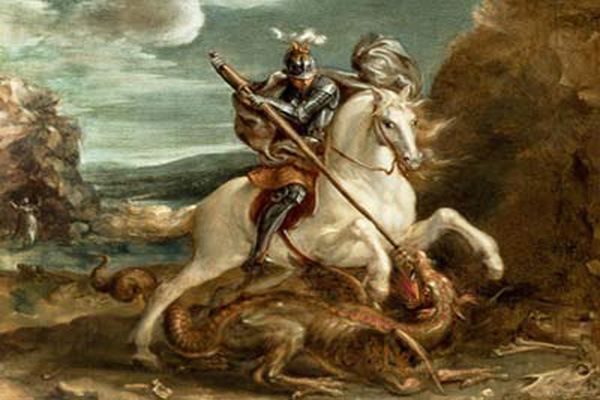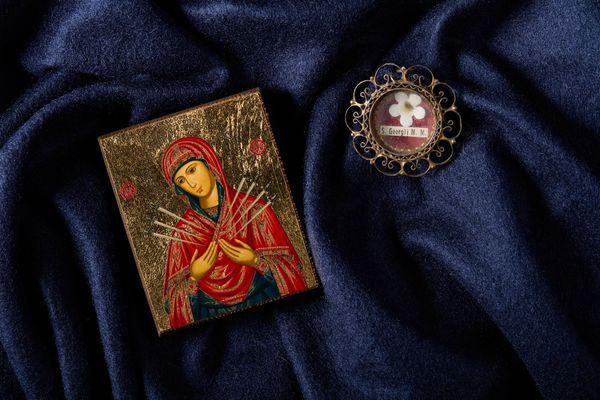Countless stories are told about St. George, including the famous episode of the dragon and the girl saved by the saint. According to the standard version of the legend, we hear that in the city of Selem in Libya, there was a large pond where a terrible dragon lived. To appease it, the inhabitants offered him two sheep a day and later a sheep and a child drawn by lot. One day the king's daughter was chosen, and while she was heading toward the pond, George passed by and pierced the dragon with his spear; a gesture that became a symbol of faith triumphing over evil.
Persecution & Martyrdom
George was born to a Christian family in Cappadocia around the year 280. After moving to Palestine, he joined the army of Diocletian. When the emperor issued the edict of persecution against Christians in 303, George gave all his belongings to the poor and, in front of Diocletian himself, tore the document apart and professed his faith in Christ. For this he suffered terrible torture and was eventually beheaded.
Shortly after his death, a basilica was erected over the place of his burial Lod, in Israel. His relics are still visible today. Among the most ancient documents attesting to the existence of St. George, a Greek epigraph from 368 found in Heraclea of Bethany speaks of the "house or church of the saints and triumphant martyrs George and companions".
The Crusades
The crusaders contributed a great deal to transforming the figure of St. George the martyr into a holy warrior, seeing in the killing of the dragon a symbol for the defeat of Islam; Richard I of England invoked him as the protector of all soldiers. With the Normans the cult of St. George became firmly rooted in England where, in 1348, King Edward III established the Order of the Knights of St. George. Throughout the Middle Ages his figure inspired a great deal of epic literature.
Credits:
Discriptions of saints lives and biographies have been excerpted, summarized, or compiled from
Franciscan Media,
CatholicSaints.Info,
Catholic Online, and
Wikipedia.

